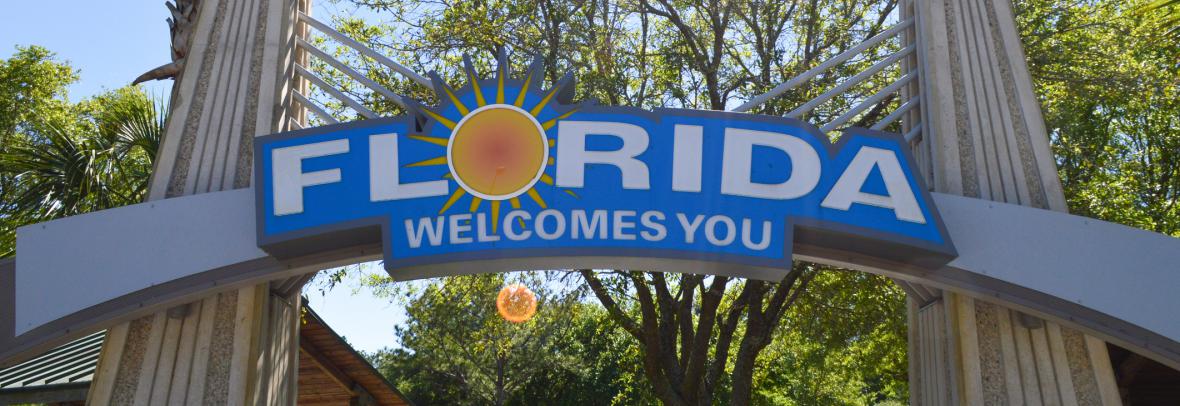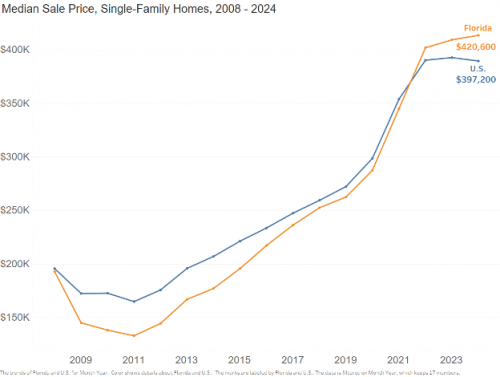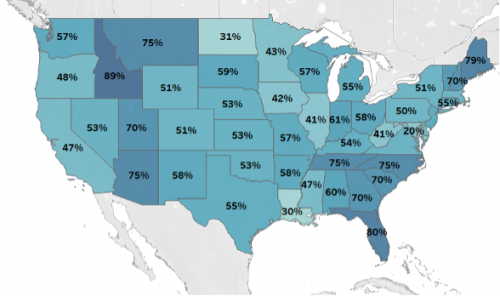
Florida Surpasses National Median Sale Price
For the first time in state history, the median sale price for Florida exceeded that of the national number and has stayed there for several months.
ORLANDO, Fla. – Each month, Florida Realtors® publishes a bevy of housing statistics, but few are examined as often as the median sale price of homes. The market price stat rolls all the closed sales in the previous month together, with 50% of homes closing for prices above and the other 50% of homes closing for prices below the middle number. Using the median instead of average sales price prevents outliers, or prices that are wildly high or low, from skewing the picture of the overall market.
For years, we’ve been reporting this number and taking note of trends within the dataset itself, comparing where we are today to where we were in the past and drawing conclusions about the strength or weakness of the market as a result. Price, after all, is a solid indicator of what is going on in the marketplace in general. While it doesn’t tell the whole story alone, it does communicate quite a bit. The National Association of Realtors® similarly publishes a median sale price number, though it rolls all the states together into one tidy number. NAR’s median sales price stat presents a market price as well, but its usefulness lies mainly in comparison with itself over time.
However, as Florida’s median sale price shot up over the last few years, we began to compare the Florida dataset with the national dataset and discovered something rather interesting: For the first time in these reported set’s history, the median sale price for Florida exceeded that of the national number and has stayed there for several months now.

Single-Family Home Median Sale Price Data from National Association of Realtors and Florida Realtors, through March 2024
Historically, Florida has been relatively volatile with pricing, having suffered an outsized impact in the housing market in the fallout from the 2007-2008 financial crisis, for example. Since much of that activity stemmed from speculative lending which led to artificially inflated prices, the subsequent drop from those peak highs was severe. However, since the market recovered, Florida has seen a slow and steady pricing gain that has been reflective of demand and rooted in real incomes.
Also, in those ensuring recovery years, Florida did not experience the level of building that was seen in the years up to the financial crisis. Since many foreclosed homes were sold at steep discounts, the number of homes available mostly matched the demand, resulting in modest but consistent price growth.
Enter 2020, when remote work became commonplace, interest rates began to fall to near zero and the music started for what would be one of the greatest games of real estate musical chairs in recent memory. Spurred by cheap capital, lots of cash-out equity and a newfound freedom, people flocked to Florida in droves. It wasn’t just retirees who decided to make their exit from the workforce a little earlier than planned – it was Millennials who started their professional lives in the coastal cities but now wanted what they likely grew up with: space, good schools, and affordable homes. Florida neatly fit the bill for a lot of younger people looking to capitalize on the entire landscape of work, housing and communication changing at once.
With the lack of inventory, new builds and existing homes, prices started to creep up as they did everywhere. However, low interest rates (hence, higher payments) made these increases easier. Consumers could absorb the higher payments , helping to further push prices up.
Percent Change in Single-Family Home Prices from 2018-2023

Data from FHFA Quarterly Purchase-Only House Price Index
Again, this happened in a lot of places, not just Florida.
What was unique about Florida, however, was the place where our pricing started. Florida homes have long been affordable compared to much of the rest of the country. Sure, there have historically been areas that are pricier than others (like the Miami area and many parts of Southwest Florida), but even these locales have been more affordable than many markets outside of Florida.
For Floridians, housing affordability gradually eroded in the 2010s as home prices increased somewhat faster than incomes, but this trend went into overdrive when prices really started to take off in 2020. Winners in those scenarios were Florida transplants loaded with cash-out equity, retirees who did not rely on earned income and those whose income matched where their job was (California or New York, for example) but doing it from here. For people like these, the median sale price mattered a little less than those who are tied to typical Florida wages.
Now, Florida is in a position we’ve never been before. The cost of a median priced home in Florida is more than the national median sale price, and that gap has been persistent for several months in a row. There are several reasons this is happening:
- Right sizing: The price of homes is catching up to where prices have been throughout the rest of the country.
- Wealth migration: Higher wage earners are moving to Florida in droves, and supporting higher sale prices.
- Seasonality: Prices tend to climb in the beginning of the year and adjust toward the end.
So, is Florida’s reputation of affordability being threatened? Perhaps.
As noted before, Florida’s pricing landscape can be volatile, but the fundamentals underpinning today’s trends are relatively solid. Still, there may be some signals that suggest the pace of price growth may moderate.
Typically, price corrections come from both a decline in demand and an increase in supply. Recent economic indicators show this may come to bear:
- Persistently high interest rates have cooled buyer demand, particularly among buyers for lower priced homes. This has shown up in certain markets over the past several months when looking at the number of closed sales by price tier.
- Active inventory has also begun to climb recently, though levels are still at or below historic norms throughout the state.
These two parts of the equation may be moving in the direction that could lead to some softening of price appreciation in the year ahead.
Jennifer Warner is an economist and Director of Economic Development
© 2024 Florida Realtors®
